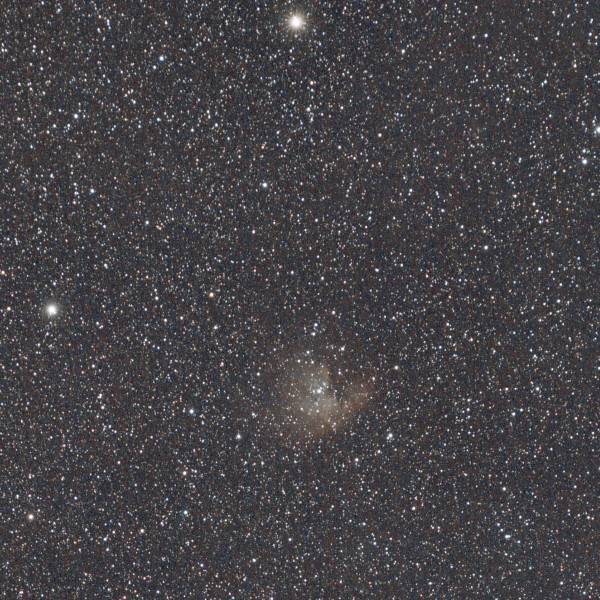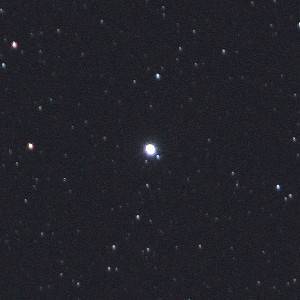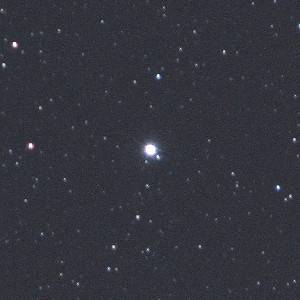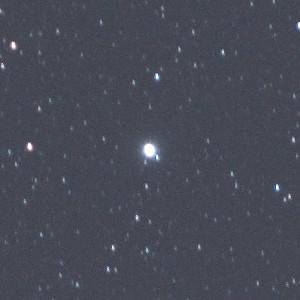
So Star Tracker Gamma works fine with the 50mm lens but that isn’t my goal. I’m on pins and needles to see if this latest version of my 3D-printed star tracker will track with my Samyang 135mm f/2 ED UMC lens. Previously, I tested a couple of ring drive mounts with disastrous results. I just couldn’t seem to overcome the backlash with my 3D-printed gears. What I saw in my photos was just a whole lot of herky-jerky motion. I’m not sure I even calculated what my keep rate was for photos but I can tell you it was less than 1%. Total fail. Epic fail. But one new gear train later, I’m ready to start testing Gamma with my Samyang 135mm f/2 lens. Drumroll, please!
Gamma & the Samyang 135mm Test – 2022-07-20
No surprises here. I’m going to run the exact same setup that I ran previously so I can check two things. First, I want to see if the Gamma Star Tracker is going to even work with the Samyang 135mm lens. And second, I want to compare the results with the 135mm lens to the results I got with the 50mm lens. Once again, the big difference between the 50mm and the 135mm lenses is the weight. The Canon 50mm f/1.8 lens weighs in at 160g while the Samyang 135mm f/2 lens tips the scales at 830g. I’m confident that the gear reduction will handle this fine. The big question, however, is if the tracking will be smooth enough to produce usable photos. Without further ado, here is what happened when I started testing Gamma with my Samyang 135mm f/2 lens.
| 50x30s ISO 800 | 25x60s ISO 400 | 17x90s ISO 400 | 12x120s ISO 400 |

| 
| 
| 
|
| 1x30s ISO 800 | 1x60s ISO 400 | 1x90s ISO 400 | 1x120s ISO 400 |

| 
| 
| 
|
Testing Observations
To say that I am pleased would be a monumental understatement. Star Tracker Gamma carried the Samyang 135mm lens just fine and I was able to produce solid results from this first test. You can see in the photos above that the tracker performed well across all the exposure times but did start to produce some slight star trailing during the longer exposures. More on that in a bit. However, the test did not go without a pretty major hitch.
Always Count on Something Going Sideways
During the 90s exposure testing, I lost the tracking and the stars started wandering up in my photos. In other words, I was tracking way too slowly. At the time I chalked this up to simply being a wonky gear tooth or something related to the printed parts. Well, I was partially right. Here’s the story.
I went out shooting again the following evening and for the life of me, the tracker simply would not work. I was going nuts trying to figure it out but eventually gave up and went to bed. The next day, I took the whole test rig apart and noticed a very solid scratch on the back plate of my gear box. Ha ha ha ha ha – I know what happened. I was locking the shaft gear in place using a couple of M3 screws. Apparently, I didn’t pay enough attention to the clearance of these screws as they collided with the back plate. Basically, I started stalling out the motor. I’m hopeful that I didn’t fry it, but that is why I bought 2. Hey, you can hardly blame me as they were $5 bucks a pop.
The good news is that it is that Gamma is tracking again, but I’ll use the fresh motor in the final version just to be sure.
Other Bits and Bobs
I did notice that on some of the other long exposure photographs I was seeing “dumbbell stars”. Clearly, this is indicative of some kind of shift in the drive. I’m sure this was happening in the 50mm photographs as well but at a 135mm focal length, everything gets magnified. It could have been the wind as it was a little bit gusty. But rather I think this was my fault in the print. I printed the main gears with a thicker layer height so they’d print faster. In the final version, I’ll print them a lot finer. Additionally, I printed the shaft gears as herringbone gears. While these are wicked cool and efficient, I fear that if they’re not absolutely perfectly lined up, they’ll produce some kind of vibration in the photos. A simple, albeit less sexy fix, is to print these gears as basic involutes.
Other than those minor issues, Star Tracker Gamma seems to be doing just fine handling the Samyang 135mm f/2 lens but I’ll continue to do a little more testing just to be sure. If I can continue to reproduce these results, I’ll go ahead and start printing the final version of Star Tracker Gamma. Ah, and I must tell you, it looks totally awesome – but you’ll have to wait to see.
Up Next
I was able to get out again one other night and ran a quick test imaging the Cygnus Loop. A little bit of a mixed bag but I’ll go ahead and tell you more about that in my next post. No worries though, Gamma continued to work just fine with the 135mm ;).
